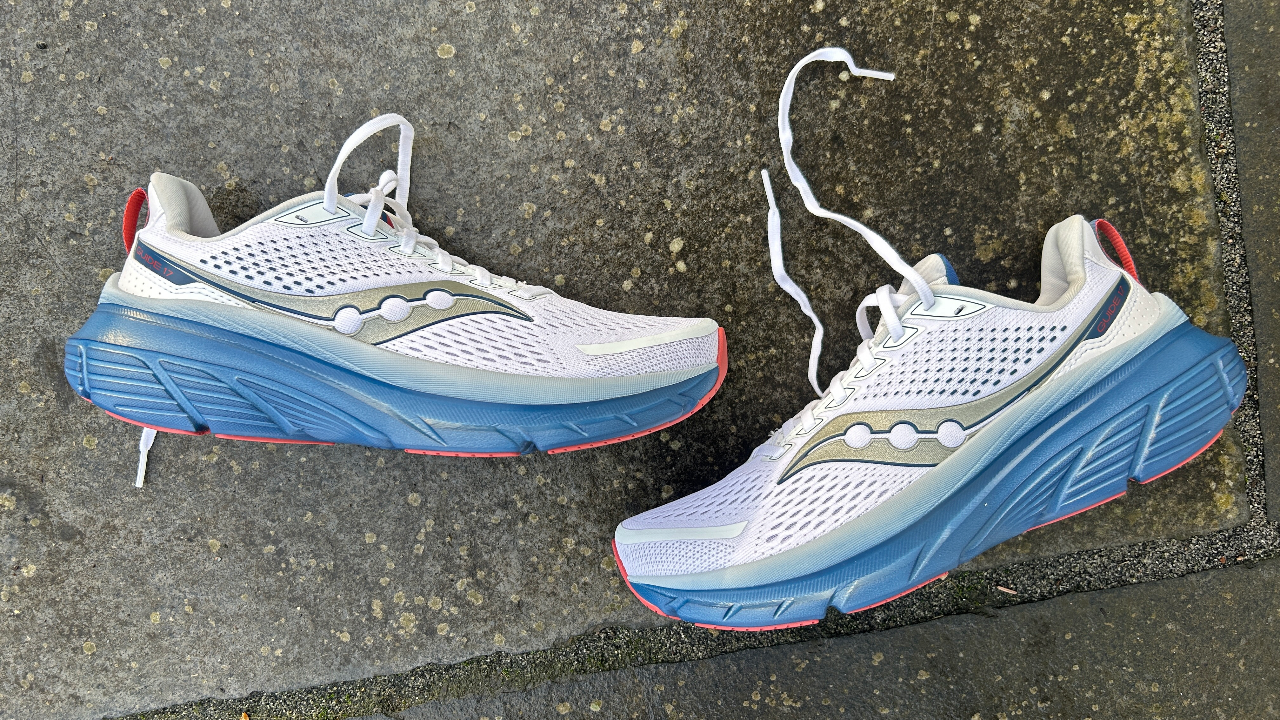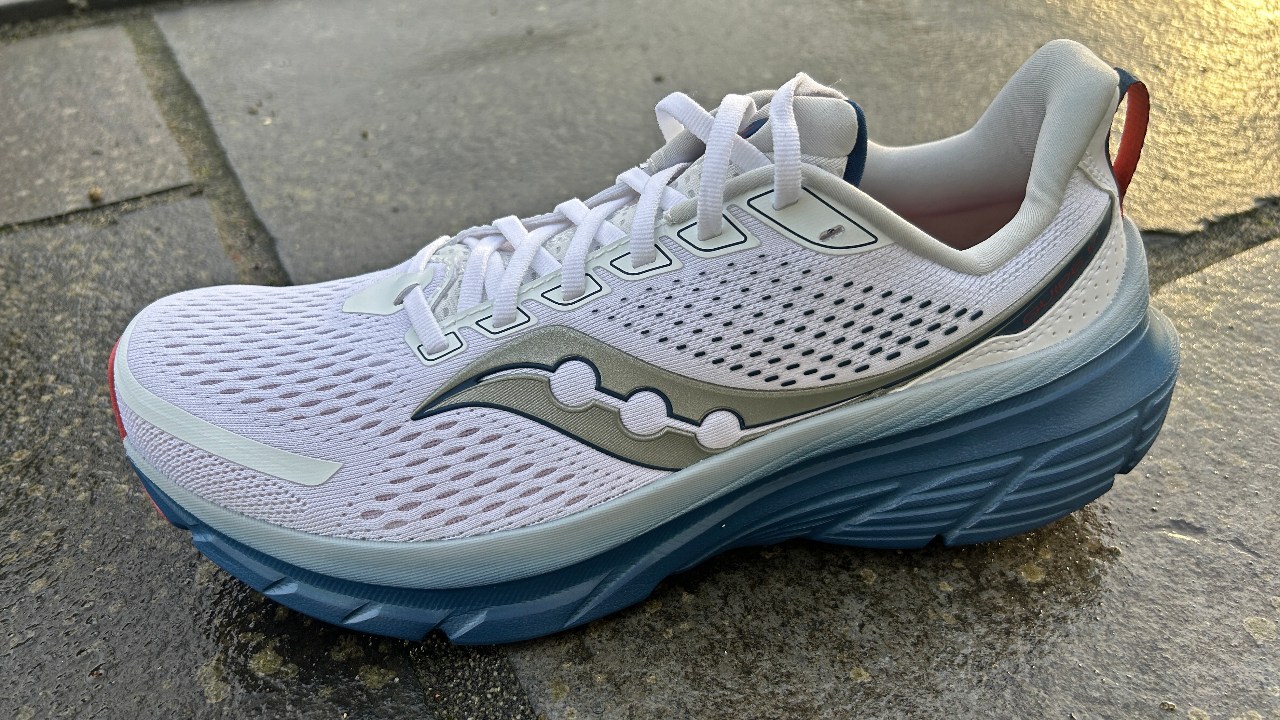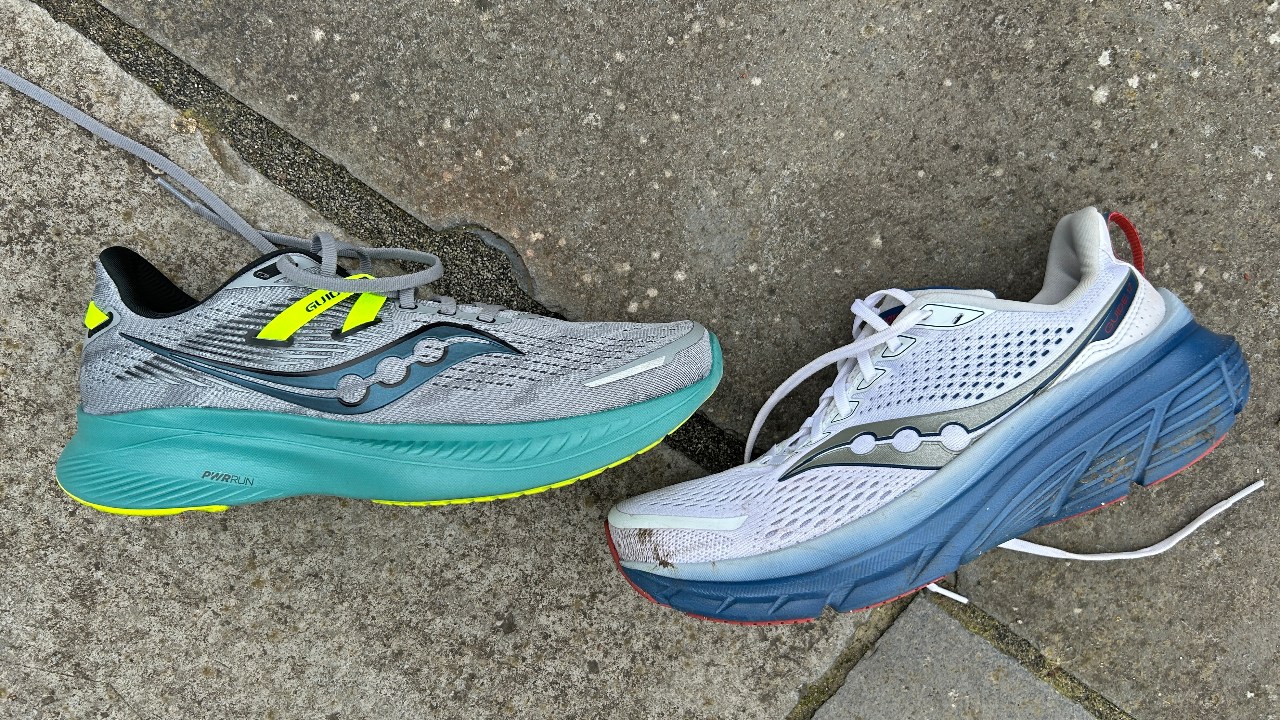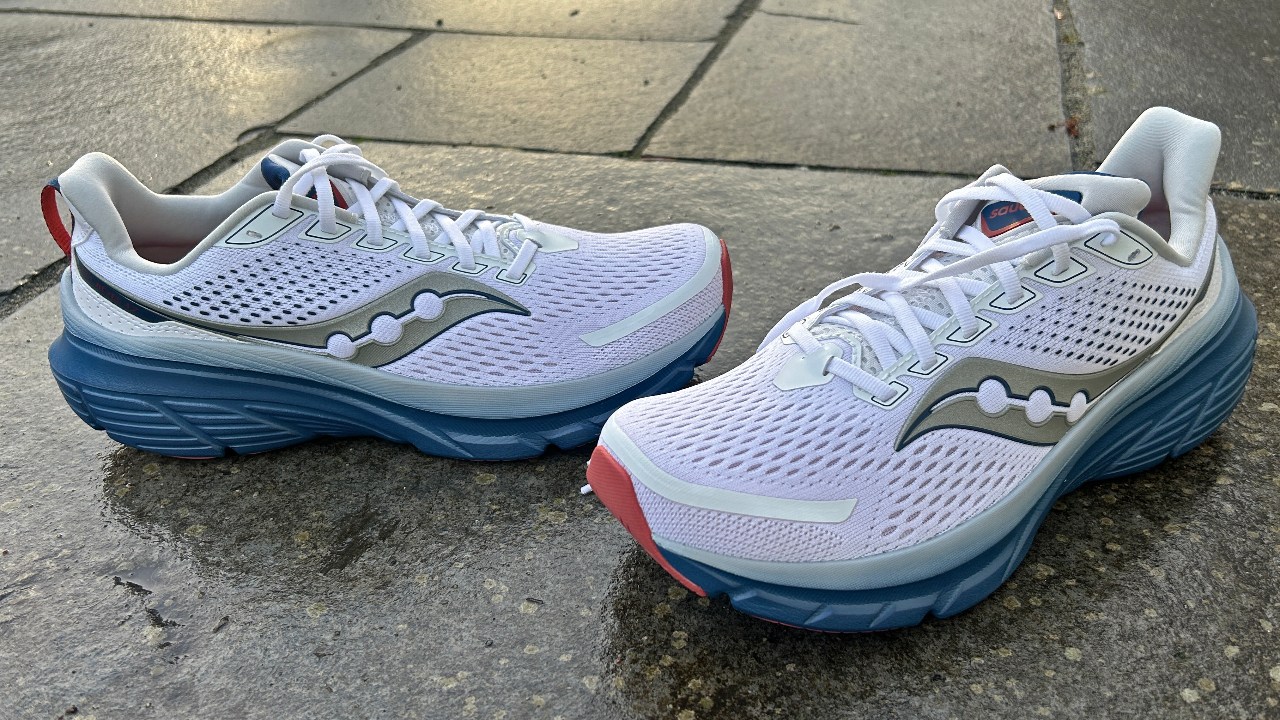
The Saucony Guide 17 is one of the best stability running shoes thanks to its comfortable, wide design, which supports without feeling overbearing. The shoe provides a smooth, cushioned ride that works best for easy runs, but there is versatility too, and the Guide 17 is a good daily trainer for those who need stability.
Saucony Guide 17: Price And Availability
The Saucony Guide 17 launched in February 2024 and costs $140 in the US and £135 in the UK. It’s the stability version of the Saucony Ride 17, which is a neutral shoe, and is cheaper than some of the top stability shoes, such as the Asics Gel-Kayano 30.
How I Tested This Running Shoe

I’ve run about 30 miles in the Guide 17, using it mostly for easy runs during my marathon training, as well as for warm-up and warm-downs before and after workouts. I have run in the Ride 16 and tested other stability shoes, and though I’m a neutral runner I appreciate the extra support at times, especially during the high-mileage weeks I logged while testing the Guide 17.
Design And Fit
The Guide 17 looks a lot like the Guide 16 on paper, with the same PWRRUN foam in the midsole and similar stack height and weight. However, Saucony has made a series of updates to the shoe that really change how it feels while running.
Instead of traditional stability elements—like a plastic insert on the medial side, which the Guide 16 used—the Guide 17 aims for stability through Saucony’s CenterPath Technology. This means features like a wider base than the Guide 16 and sidewalls of foam that help guide your foot into a neutral position when running. The drop has also been lowered from 8mm on the Guide 16 to 6mm, with a stack height of 35mm at the heel and 29mm at the forefoot. The lower drop and rocker profile helps to roll you through your foot strike smoothly.

Despite the wider design and an increase in stack height under the forefoot, the Guide 17 is a similar weight to the Guide 16. At 10.4oz/295g in my UK size 9, the Guide 17 is lighter than many stability shoes. Part of that is based on the minimal rubber coverage on the outsole. There is rubber at the heel and around the edge of the forefoot, but there’s a lot of exposed foam on the base. This didn’t negatively affect grip during testing, but may reduce durability, especially if you take the shoe on gravelly tracks or light trails.
The upper is padded enough around the tongue and collar to feel comfortable without being oppressive, and I found the Guide 17 fitted well in my usual running shoe size. There is a PWRRUN+ foam sockliner that is softer and bouncier than the PWRRUN midsole foam underneath, which also creates a more comfortable step-in feel.
Running Performance
The Guide 17 is a supportive cruiser. I found it just the ticket for easy and recovery runs during marathon training. Although it’s quite a big and wide shoe, the ride was smooth and the stability elements weren’t intrusive. It lives up to its name by guiding the foot into a neutral position by providing support on all sides, rather than using medial posting or a similar method to prevent overpronation.
I’d use the shoe in a running shoe rotation as an easy-day option because I prefer lighter shoes for tempo runs or speedwork, but the Guide 17 could be used as an all-rounder if you want a highly cushioned ride on every run. It’s not that heavy, and the rockered ride helps when picking up the pace.

The 2mm decrease in drop, compared with the Guide 16, is more noticeable than I expected. The Guide 16 provided a snappier ride that was firmer, whereas the Guide 17 felt smoother and notably more cushioned even though both shoes have similar amounts of foam underfoot; the Guide 16 also has a 35mm stack at the heel, which drops to 27mm at the forefoot.
Overall, the changes have improved the shoe’s running performance, though some may find the firmer feel of the Guide 16 makes it a more versatile daily trainer. The Guide 17 is more a cushioned cruiser, but I’d say the changes will appeal to fans of the Guide line, and might win over some new ones. Even as a neutral runner the support you get is appreciated at times, and the wider base means the Guide 17 feels as stable as the Guide 16.
Is The Saucony Guide 17 Worth It?

The Guide 17 is a good cushioned daily trainer for those who want extra support, and plays its part well as a more supportive counterpart to the Ride 17. The Ride 17 has a more responsive midsole, made entirely of PWRRUN+ foam, and is more versatile, but I found the Guide 17 had a smoother, more comfortable feel.
The shoe will work best in rotation with a faster option, such as the Saucony Tempus, which also has a stable design, though the Guide 17 also works as an all-rounder for newer runners who want a stable shoe.
The Asics Gel-Kayano 30 is another option for those seeking a cushioned stability shoe and it has more foam underfoot for those seeking maximum comfort and protection on the run, but the Kayno is more expensive and less versatile than the Guide 17.







